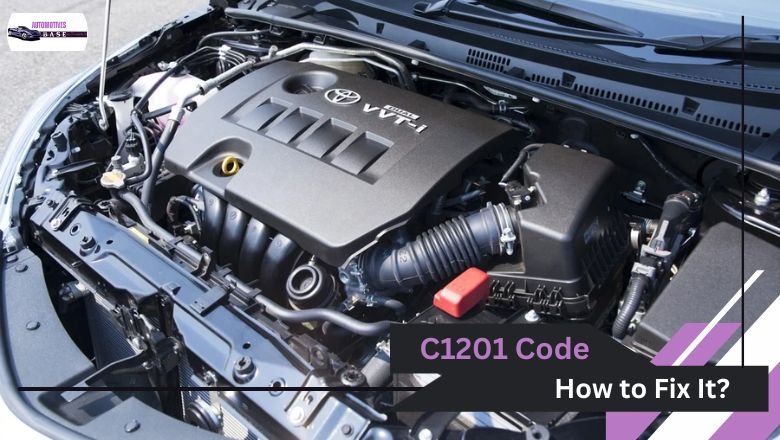To solve the C1201 Toyota code mystery, begin by understanding that it serves as nothing more than a vague warning signal flashing on your vehicle’s control panel. Like a silent alarm ringing in the background, this code offers no concrete clues about what exactly has gone awry under your car’s hood.
Don’t let its ambiguous nature deter you from embarking on a quest for answers. By delving deeper into the intricacies of automotive diagnostics and honing your problem-solving skills, you can navigate through the labyrinthine world of C1201 troubleshooting with confidence and competence.
What Does The C1201 Toyota Code Mean?
The C1201 Toyota code indicates a problem with the engine control system in your vehicle. Specifically, it triggers a fail-safe function that disables TRAC and VSC activities when an error is detected via the control area network (CAN). This safeguard is activated until the engine signals return to normal input.
The Diagnostic Trouble Code (DTC) C1201 related to this issue may not be stored in memory if standard inputs are received. It’s essential to address this code promptly to ensure optimal performance and safety for your Toyota vehicle.

The Toyota code C1201 is a diagnostic trouble code (DTC) that indicates a malfunction in the chassis system of a vehicle. The engine control units (ECUs) in modern vehicles are equipped with unique diagnostic systems to communicate with other devices on the network, such as the CAN bus.
When an error or malfunction is detected, the system registers a fault code like C1201 and activates warning lights. This particular code could be related to issues with electronic stability control or anti-lock control systems. The exact location and cause of the problem specified by the automaker will need to be determined for a proper diagnosis and repair.
C1201 Trouble Code Symptoms
The C1201 trouble code in a Toyota indicates a malfunction in the ABS system. This code is often triggered by issues with the engine control module or faulty wiring. The symptoms of this code may include:
Traction Light On
When there is a problem with the traction control system in your vehicle, the first sign you may notice is the illumination of the traction control light on your dashboard. This light serves as an indicator that something is amiss within the system. It is designed to alert you to potential issues such as wheel slippage or loss of traction.

The traction control system plays a crucial role in helping your vehicle maintain stability and grip on the road, especially in slippery or challenging driving conditions. Ignoring this warning light sign could lead to reduced traction, handling difficulties, and an increased risk of accidents.
Vehicle Slipping
When driving on slippery roads, you may notice your vehicle slipping more than usual. This can lead to skidding and decreased control of the car. The traction control system plays a crucial role in preventing these incidents by managing wheel slippage. If the traction control system malfunctions, the risk of sliding and skidding increases.
One common sign of traction control system issues is noticeable difficulty maintaining grip on slick surfaces. You may also feel the car’s handling becoming less predictable and stable. If you encounter slippery road conditions frequently or notice persistent slipping, it is advisable to have your vehicle inspected by a professional mechanic.
The Brake Light is Not Working
If you notice that your brake light is not working when you press the brake pedal, it could indicate a problem with the brake light control switches. These switches are responsible for activating the brake lights when you apply pressure to the brakes.
When they are not functioning properly, your brake lights may fail to illuminate, posing a safety hazard on the road. It is essential to address this issue promptly to ensure that other drivers can see when you are slowing down or stopping.
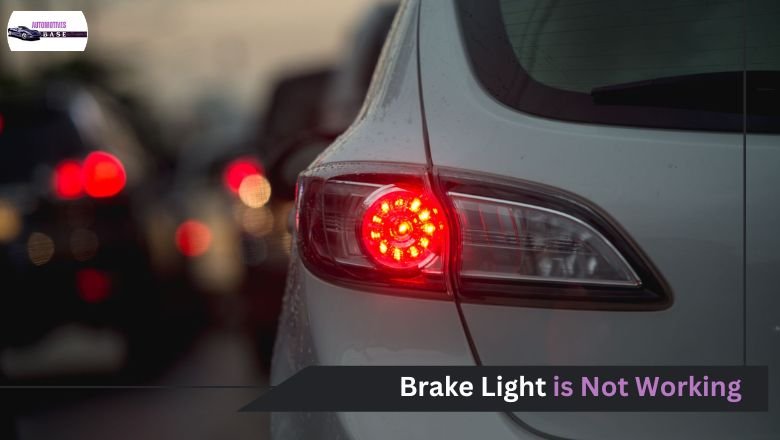
To fix this problem, you may need to replace or repair the faulty brake light control switches. This typically involves accessing and inspecting the switches located near the brake pedal assembly. In some cases, simply cleaning these switches may resolve the issue.
Causes Of The C1201 Code
The C1201 error code can be triggered by various issues, with the brake light switch being a common culprit. Problems with the traction control system can lead to the appearance of this error code.
Brake Light Switch
A brake light switch is a crucial component connected to a car’s brakes that activates the brake lights when the brakes are applied. It is typically installed near the pedal or handlebar for easy access. When malfunctioning, the brake light switch may trigger a C1201 error code indicating issues with the engine control system.
The Brake Control Module (BCM) receives signals from the brake light switch to turn on the brake lights and activate safety systems like Traction Control and Vehicle Stability Control. If the BCM fails to receive signals due to a faulty switch, it can lead to errors like C1201.
Addressing problems with the brake light switch promptly is essential to ensuring the proper functioning of these critical safety systems. The brake light switch, located on the brake pedal, plays a crucial role in informing the Traction Control System when the brakes are applied. It is essential to maintain the proper functioning of the switch, as it is a key safety component in your vehicle.
Any issues with the brake light switch should be addressed promptly to avoid potential safety hazards while driving. Regular inspections and maintenance can help prevent sudden malfunctions and ensure optimal performance of this critical component.
A Problem With Traction Control System
An issue with the Traction Control System is a common cause of the C1201 code. This system plays a crucial role in preventing your vehicle from slipping on slippery roads. The code may appear when there is a malfunction within the traction control system’s components.
If left unattended, these failures can impede the system’s ability to function effectively and compromise your driving safety.
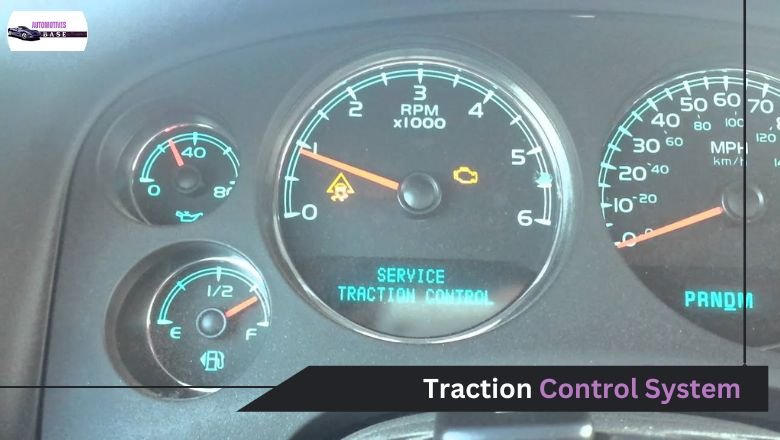
Listed below are a few common malfunctions of the Traction Control System components:
- Switch for the brake light
- Sensor for the traction control system
- Controller for the traction control system
- Switch for the traction control system
Anti-lock brake System Malfunction
The Anti-Lock Brake System (ABS) is a safety feature that prevents wheels from locking up during braking. It uses sensors to detect potential lock-ups and adjust brake pressure accordingly.
The C1201 code indicates a malfunction in the ABS system, causing issues with engine control. Common causes of ABS problems include faulty control modules, pumps, sensors, or low brake fluid levels.
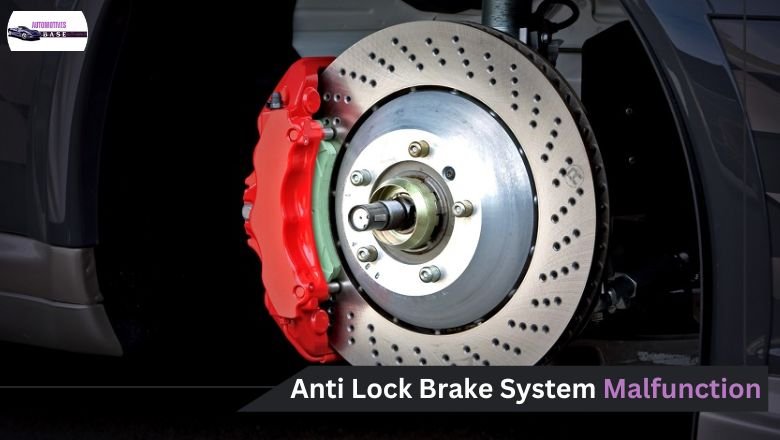
When the ABS malfunctions, it can affect the overall performance and safety of the vehicle. It is important to address ABS issues promptly to ensure proper functioning of the braking system. Ignoring ABS problems may lead to compromised vehicle control and an increased risk of accidents.
Regular maintenance and prompt repairs are essential for a safe driving experience.
Wet Wheel Speed Sensor
The wet wheel speed sensor plays a crucial role in the ABS system by detecting wheel speed and preventing lock-ups. Positioned on the wheel’s hub, this sensor is prone to getting wet if exposed to water or other liquids.
When moisture accumulates on the sensors due to driving through puddles or washing the car, it can trigger the C1201 code. This code indicates that the sensor has been affected by water, potentially impacting its accuracy in detecting wheel speed.
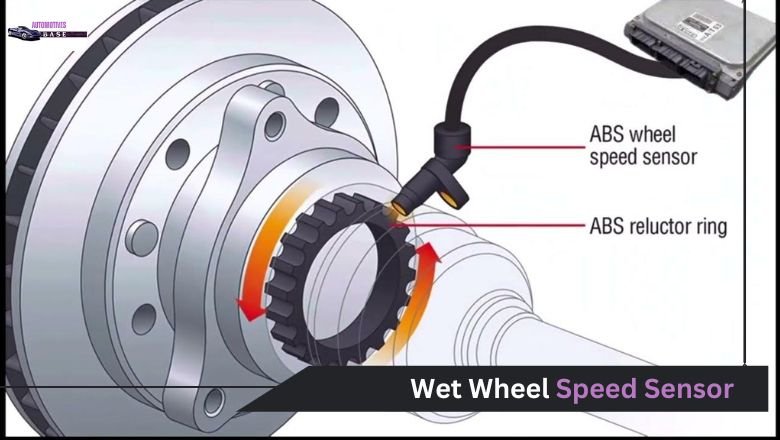
To prevent issues with wet sensors, it is important to ensure they are properly sealed and protected from direct contact with water. Regular maintenance checks can help identify any water-related issues early on and avoid potential ABS malfunctions while driving.
Faulty Oxygen Sensor
A faulty oxygen sensor can trigger the C1201 error code in a vehicle. Various factors, like age, contamination, or poor connections, can lead to an oxygen sensor malfunction. Oxygen sensors play a vital role in modern automobiles by optimizing the air-fuel ratio.
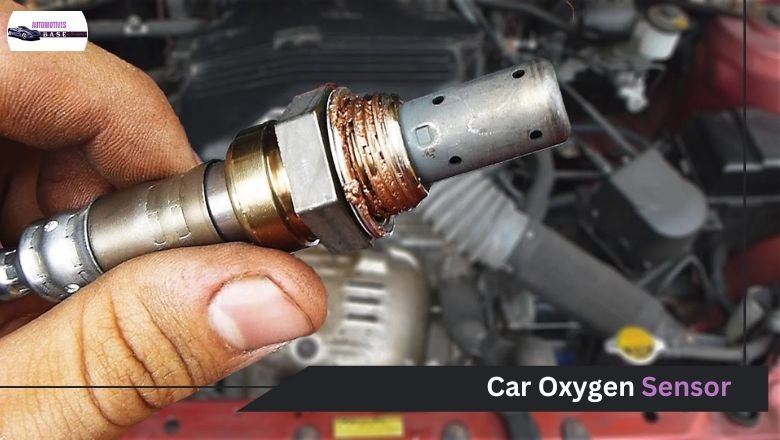
These sensors generate voltage signals based on the oxygen levels in the exhaust stream, helping the car’s computer adjust the ratio for better efficiency and performance.
An incorrect air-fuel mixture can cause increased emissions, reduced fuel efficiency, and decreased power output. If the mixture leans too much, it may even damage the engine.
How serious is the C1201 code?
The C1201 code indicates a serious issue where the ECM cannot communicate with the Electronic Stability Control System and Anti-lock Braking System, potentially leading to accidents. Failure to address this error promptly could result in catastrophic damage to your car, increasing the risk of sliding on slick roads and potential injuries.
Another concern is the brake light not turning on when pressing the pedal, posing further hazards. It is essential to address the C1201 error immediately to prevent significant problems and ensure safe driving conditions.
What Repairs Can Fix The C1201 Toyota Code?
The C1201 Toyota code can be fixed by addressing three linked codes: C1201 Engine Control System Malfunction, P0455 Evaporator Emission Control (leak identified, big leak, or no purge flow), and P0441 Evaporator Emission Control System Improper Purge Flow.
The P0 codes point to possible gas leaks in the system. It is caused by a faulty gas cap or issues with the charcoal canister or filler torque line. When the C1201 code triggers, it signals a need to reduce VSC and traction while activating the Check Engine Light. It is crucial to address these issues promptly, as they can impact vehicle performance and safety.
By repairing the root cause of the problem indicated by the P0 codes, such as replacing a worn-out gas cap or fixing attachment errors, you can effectively eliminate the C1201 error code.
What Repairs Can Fix the C1201 Toyota Code?
The C1201 Toyota code typically indicates a problem with the Engine Control Module (ECM) or the Brake Control Module. Simply replacing the gas cap will not resolve this specific issue. It’s important to accurately diagnose the root cause of the C1201 code before proceeding with any repairs.
Ignoring the problem may lead to further complications down the line. Consulting a professional mechanic or using advanced diagnostic tools can help pinpoint the exact source of the error code.
Potential repairs for a C1201 code may include recalibrating or replacing the ECM, checking and repairing wiring connections, or addressing any brake system malfunctions. Addressing these underlying issues will ultimately help clear the check engine light and ensure optimal performance of your vehicle.
Consider these potential solutions for addressing the problem:
- Begin by examining the gas cap, ensuring it is securely fastened, and resetting all error codes.
- Verify if there are any leaks in the gas cap; if so, clean and apply lubricant to the seal before clearing the codes.
- If the previously mentioned recommendations prove ineffective, it is necessary to acquire an OEM aftermarket gas lid. Keep in mind that opting for a subpar cap will not address the problem; therefore, opt for a top-tier alternative instead.
- Sometimes, buying a new cap may fix the issue, but there are times when it doesn’t work. This suggests that the problem may resurface later with more serious consequences. So, what do you do next? In such cases, consider purchasing a fresh and authentic cap from a third-party seller.
- Ensure that the product you are buying comes with an authentic seal cap. Swap out the old voila and lid for the new seal, and you will resolve all your problems. Once you have completed the repairs, utilize a code reader or disconnect your batteries to clear all codes from your computer system.
Fixing Cost
The cost of fixing a C1201 error in a Toyota can vary based on the underlying cause. For minor issues like a loose or faulty gas cap, the repair expenses are generally low, usually under $20 for tightening or replacing the cap.
If the error is triggered by more complex problems, such as a malfunctioning brake actuator or damaged wiring, the repair costs could be significantly higher.
The fixing cost for a C1201 Toyota can increase significantly if bleeding the brakes or replacing the ABS pump is required. Bleeding the brakes is a process that removes air bubbles from the brake lines to ensure proper functioning, adding more labor costs to the repair.
Replacing the ABS pump, which helps regulate anti-lock braking systems, can be expensive and typically costs at least $300 for a new pump alone.
When you see the C1201 Toyota error code, don’t panic – it often doesn’t require any actual part replacements. This code typically signals that a sensor has been triggered due to recent maintenance on your vehicle.
The best course of action is to take your car to a trusted mechanic who can connect it to a diagnostic scanner. By analyzing the data from the scanner, the mechanic can pinpoint the exact issue causing the code to display, saving you time and potential headaches.
If your Toyota is showing the C1201 code, you will need to have a mechanic reset it. This service typically costs between $100 and $150. It is important to take your car to a qualified mechanic or dealership for an accurate diagnosis and pricing estimate.
Conclusion
When faced with a C1201 Toyota code in your Toyota vehicle, there is no need to further investigate wheel speed sensor issues. This code indicates that the stability control system is already working to address any potential wheel rock or instability.
By activating the ABS brakes and adjusting engine power, the system aims to maintain control and prevent swerving or skidding. Trust in the technology designed to keep you safe on the road and focus on addressing any other maintenance needs your vehicle may have.
FAQ`s
What is a C1201 engine control system fault?
A C1201 engine control system fault refers to a specific error code that can be triggered by issues within the vehicle’s engine control system. This fault code typically indicates a problem with the Electronic Control Module (ECM) or Engine Control Unit (ECU) in modern vehicles. The C1201 fault code can be caused by various malfunctions, such as sensor failures, wiring problems, or software glitches.
What is the C1201 code on the ABS?
The C1201 code on the ABS stands for Engine Control System Malfunction. This code indicates that there is a problem with the communication between the engine control module and the ABS. When this code appears, it can lead to issues with proper brake functioning and potentially pose a safety risk.

